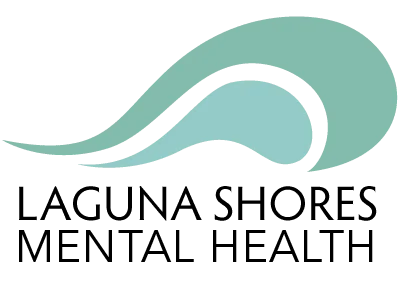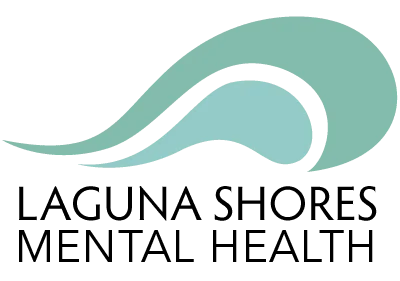Obsessive-Compulsive Disorder (OCD) is a mental health condition that affects millions worldwide. But within the spectrum of OCD, there is a lesser-known subtype called “Pure OCD” or “Pure O,” which often goes undiagnosed and misunderstood. While traditional OCD is characterized by observable compulsive behaviors like handwashing or checking locks, Pure OCD manifests internally with intrusive, distressing thoughts and mental rituals invisible to others. This blog explores what Pure OCD is, its symptoms, causes, and mental health treatment options to shed light on this challenging yet treatable condition.
Understanding Pure OCD: An Overview
Pure OCD, short for “Purely Obsessional OCD,” is a term used to describe individuals who experience obsessions without visible compulsions. However, the name “Pure OCD” is somewhat misleading because compulsions are still present – they are simply mental rather than physical. For example, someone with traditional OCD may fear contamination and compulsively wash their hands, while someone with Pure OCD may have intrusive thoughts about harming someone and engage in mental rituals such as repeated self-reassurance, mental reviewing, or avoidance to neutralize their distress.
People with Pure OCD often suffer in silence because their compulsions are hidden. They may believe their thoughts say something terrible about their character, leading to intense guilt, shame, and anxiety. Without understanding that these thoughts are a symptom of OCD, many fear seeking help, thinking they will be judged or misunderstood.
How Pure OCD Differs from Traditional OCD
The main difference between Pure OCD and traditional OCD lies in how compulsions manifest. Traditional OCD typically involves:
- Observable behaviors: Repetitive actions like cleaning, arranging, counting, or checking.
- Clear triggers: Fear of germs, fear of harm through negligence, or superstitious beliefs.
In contrast, Pure OCD involves:
- Intrusive, unwanted thoughts: Often violent, sexual, religious, or morally taboo thoughts that contradict the person’s values.
- Mental rituals: Rather than washing or checking, individuals mentally review scenarios, pray repeatedly in their head, seek internal reassurance, or analyze the meaning of their thoughts.
Common Symptoms of Pure OCD
While symptoms vary, common experiences for people with Pure OCD include:
- Intrusive thoughts or images: Violent, sexual, blasphemous, or morally repugnant thoughts that cause intense anxiety.
- Mental reviewing: Replaying conversations or actions repeatedly in the mind to ensure no wrongdoing occurred.
- Compulsive reassurance-seeking: Asking others if they think the thought is “normal,” or constantly searching online for reassurance about their moral character.
- Avoidance behaviors: Avoiding situations, people, or triggers associated with intrusive thoughts.
- Guilt and shame: Feeling deep shame about having these thoughts, even though they are unwanted and do not align with true intentions.
- Hyperawareness: Excessive focus on bodily sensations or mental processes, leading to distress and obsessive thinking about them.
The Role of Intrusive Thoughts in Pure OCD
Intrusive thoughts are the cornerstone of Pure OCD. These are unwanted, distressing thoughts, images, or impulses that pop into a person’s mind against their will. Importantly, having these thoughts does not mean someone wants them to happen. In Pure OCD:
- Thoughts are ego-dystonic, meaning they conflict with the person’s values and identity.
- They cause significant anxiety because the person worries about their meaning or potential implications.
- The compulsive response is to engage in mental rituals to reduce the anxiety, creating a vicious cycle that strengthens the OCD over time.
What Causes Pure OCD?
Like other forms of OCD, the exact cause of Pure OCD is not fully understood. However, research suggests several contributing factors:
- Genetics: OCD tends to run in families, indicating a hereditary component.
- Brain chemistry: Imbalances in neurotransmitters, particularly serotonin, play a role in OCD development.
- Brain structure and functioning: Neuroimaging studies show differences in brain circuits involved in habit formation and anxiety regulation among people with OCD.
- Environmental factors: Stressful or traumatic life events can trigger OCD onset or worsen symptoms.
- Personality traits: Individuals with high moral standards, perfectionism, or heightened responsibility often have increased vulnerability to OCD.
The Impact of Pure OCD on Daily Life
Pure OCD can be debilitating. Because intrusive thoughts are often taboo or morally repugnant, individuals may:
- Withdraw from relationships: Fearing judgment or rejection.
- Struggle academically or professionally: Due to concentration difficulties from constant mental rituals.
- Experience depression: From hopelessness, isolation, and believing they are “bad” or “dangerous” people.
- Avoid social situations: If intrusive thoughts involve harming others or behaving inappropriately.
- Develop co-occurring disorders: Such as generalized anxiety disorder or panic disorder.
The Difference Between Obsessive Thoughts and Compulsive Behaviors
It is important to distinguish between obsessions and compulsions in OCD:
- Obsessions: Unwanted, intrusive thoughts, images, or urges causing distress.
- Compulsions: Actions or mental rituals performed to reduce the distress caused by obsessions.
In Pure OCD, compulsions are predominantly mental, such as:
- Reassuring oneself they would never act on thoughts.
- Reviewing memories to check for wrongdoing.
- Mentally praying or neutralizing thoughts with “good” thoughts.
How is Pure OCD Diagnosed?
Diagnosis involves a comprehensive evaluation by a mental health professional, often including:
- Clinical interviews: To assess symptom patterns, distress, and functional impairment.
- Diagnostic criteria: The DSM-5 does not distinguish Pure OCD as a separate diagnosis but classifies it under OCD with predominant obsessions.
- Screening tools: Such as the Yale-Brown Obsessive Compulsive Scale (Y-BOCS) to assess severity.
Treatment Options for Pure OCD
Pure OCD is highly treatable. Effective options include:
- Cognitive Behavioral Therapy (CBT): Focuses on changing thought patterns and reducing anxiety-driven behaviors.
- Exposure and Response Prevention (ERP): The gold standard treatment for OCD, involving exposure to feared thoughts without performing rituals to reduce anxiety over time.
- Medication: Selective serotonin reuptake inhibitors (SSRIs) are commonly prescribed to reduce OCD symptoms.
- Combination therapy: Many individuals benefit from therapy combined with medication for optimal results.
Cognitive Behavioral Therapy (CBT) and Exposure and Response Prevention (ERP) for Pure OCD
CBT for Pure OCD often incorporates ERP, which involves:
- Exposure: Deliberately confronting intrusive thoughts without engaging in mental rituals.
- Response prevention: Resisting the urge to perform reassurance-seeking or mental reviewing.
- Cognitive restructuring: Challenging beliefs about the meaning or danger of intrusive thoughts.
For example, a person with intrusive thoughts about harming someone may work with their therapist to accept the presence of the thought without analyzing it or seeking reassurance. Over time, this reduces the thought’s power and anxiety.
ERP can feel uncomfortable initially, as it involves tolerating distress. However, it is highly effective and considered the first-line treatment for OCD.
The Role of Medication in Managing Pure OCD
SSRIs such as fluoxetine (Prozac), sertraline (Zoloft), and fluvoxamine (Luvox) are FDA-approved for OCD treatment. They work by increasing serotonin levels, which helps regulate mood and anxiety. Some individuals may require higher doses for OCD than for depression, and it can take several weeks to see full benefits.
In cases where SSRIs are ineffective, providers may augment treatment with other medications, such as atypical antipsychotics. Medication should always be managed by a psychiatrist or prescribing clinician familiar with OCD treatment.
Myths and Misconceptions About Pure OCD
Several misconceptions surround Pure OCD, including:
- “People with Pure OCD want their thoughts.” These thoughts are ego-dystonic and cause intense distress.
- “They will act on their thoughts.” Studies show that individuals with Pure OCD are at no higher risk of acting on intrusive thoughts than the general population.
- “It’s just overthinking.” Pure OCD is not a typical worry; it is a clinical disorder requiring treatment.
- “If you can’t see compulsions, it’s not OCD.” Mental rituals are as real and impairing as visible compulsions.
Seeking Help: Finding the Right Treatment for Pure OCD
If you or a loved one experiences symptoms of Pure OCD, reaching out for help is the first step. At Laguna Shores Mental Health, we provide comprehensive evaluations, individualized treatment plans, and compassionate care tailored to your unique needs.
If you are struggling with intrusive thoughts or suspect you may have Pure OCD, contact Laguna Shores Mental Health today. Our experienced clinicians are here to guide you toward relief and a healthier, more peaceful mind.
- American Psychiatric Association. Diagnostic and Statistical Manual of Mental Disorders (5th ed.).
- International OCD Foundation. “Types of OCD.”
- Abramowitz, J. S., McKay, D., & Storch, E. A. (2017). Obsessive-Compulsive Disorder: Advances in Psychotherapy—Evidence-Based Practice.

